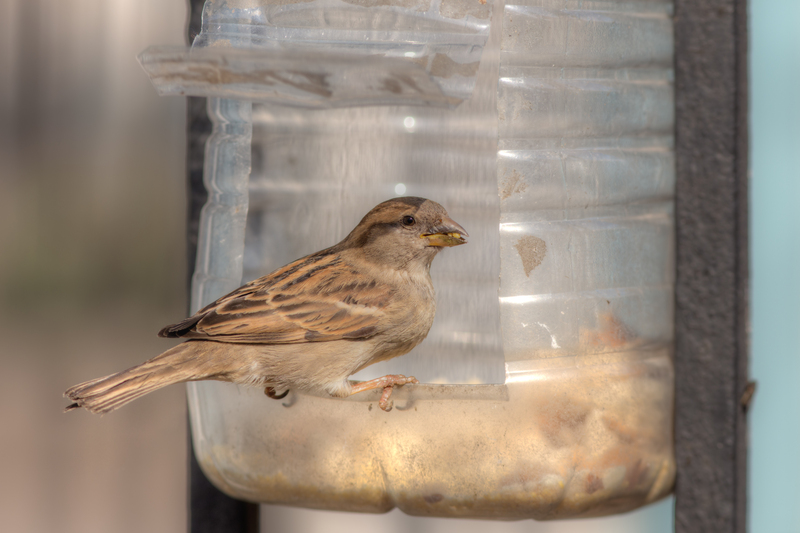
Tame the Plastic Beast: Practical Waste Reduction
Plastic waste is everywhere: choking our oceans, piling on landfills, and threatening wildlife and human health alike. But what can individuals and communities do to tame the plastic beast? In this comprehensive guide, we'll explore practical, actionable, and sustainable ways to reduce plastic waste in everyday life and take a bold step toward a cleaner, greener planet.
Why Should We Tame the Plastic Beast?
Plastic pollution poses a global crisis. According to the United Nations, over 400 million tons of plastic are produced every year, with at least half designed for single use. Shockingly, less than 10% of this plastic is recycled. The rest pollutes our environment, harming ecosystems and entering our food chain.
- Environmental Impact: Plastics take hundreds -- sometimes thousands -- of years to decompose, releasing toxic chemicals into soil and water.
- Wildlife Endangerment: Millions of animals -- from seabirds to whales -- are killed each year due to plastic ingestion and entanglement.
- Human Health Risks: Microplastics are now found in our food, drinking water, and even blood, with potential long-term health consequences.
Taming the plastic beast isn't just an environmental responsibility -- it's a necessity for the health and survival of all living things.
Understanding Single-Use Plastics and Their Impact
To fight plastic waste, we must first understand where it comes from. Single-use plastics are items intended for one-time use before disposal. Examples include plastic bags, bottles, straws, wrappers, and cutlery. These items make up about 50% of all plastic produced globally.
Everyday Sources of Plastic Waste
- Packaging: Food wrappers, takeout containers, plastic films, and shopping bags.
- Beverage Industry: Water bottles, soda bottles, coffee cup lids, and stirrers.
- Personal Care: Toothbrushes, shampoo and soap bottles, razors, and cotton swabs.
- Household: Cleaning bottles, trash bags, sponges, and disposable gloves.
By identifying the sources, we unlock the power to target and reduce plastic in our daily routines.
Practical Ways to Reduce Plastic Waste
1. Become a Conscious Consumer
Mindful shopping is the first step to tame the plastic beast. Begin by being aware of what you are buying, how it is packaged, and what you truly need.
- Choose products with minimal or no plastic packaging; opt for paper, glass, or reusable alternatives.
- Buy in bulk to reduce packaging waste, or choose refill stations where available.
- Support brands committed to sustainable packaging and plastic-free initiatives.
2. Adopt Reusable Alternatives
Replace single-use plastic products with reusable options to make a major dent in your waste output:
- Reusable Bags: Invest in sturdy cloth or canvas bags for groceries and daily errands.
- Water Bottles: Carry a reusable stainless steel or glass water bottle.
- Food Containers: Use glass, metal, or silicone containers for lunch, leftovers, and snacks.
- Straws and Cutlery: Say no to plastic straws. Carry bamboo, stainless steel, or silicone straws and cutlery sets.
- Travel Mugs: Bring your own mug for coffee or tea on the go.
Taming plastic waste starts with swapping disposables for durable, reusable alternatives wherever possible.
3. Shop Locally and Sustainably
- Visit farmer's markets or local stores that use minimal packaging.
- Buy unpackaged produce and bring your own bags.
- Support zero-waste shops for groceries, soap refills, and household items.
- Choose products made from renewable resources--such as bamboo, hemp, or recycled materials.
Shopping local doesn't only reduce plastic--it also cuts down on transport-related emissions and supports community businesses.
4. Rethink Your Personal Care Routine
Personal care and bathroom items are major plastic waste generators. Try these steps to reduce your footprint:
- Bar Soaps and Shampoos: Switch to package-free bars instead of bottled liquids.
- Bamboo Toothbrushes: Swap plastic handles for biodegradable bamboo alternatives.
- Refillable Containers: Use refillable bottles for lotions, shampoos, and body wash at refill stations.
- Safety Razors: Choose metal razors with replaceable blades, instead of plastic disposables.
- Plastic-Free Cotton Swabs: Opt for those with paper or bamboo sticks.
5. DIY and Upcycle
Get creative and cut down your plastic waste with Do-It-Yourself solutions:
- Make your own cleaning products using baking soda, vinegar, and essential oils--and store them in glass jars.
- Upcycle plastic containers into organizers, planters, or art projects, reducing the need for new storage solutions.
- Sew fabric produce bags or beeswax wraps to replace plastic wrap.
Combining ingenuity and resourcefulness is a rewarding way to tame the plastic beast at home!
6. Reduce Plastic When Eating Out
- Bring your own takeout containers and utensils to restaurants or cafes--let staff know you prefer to use them.
- Politely refuse straws, plastic cutlery, or unnecessary packaging when possible.
- Eat in rather than taking your meal to go to avoid disposable packaging.
7. Properly Sort and Recycle Plastics
Despite our best efforts, some plastics are unavoidable. Understanding local recycling rules can ensure your recyclable plastics don't end up in landfills.
- Clean all containers before recycling; dirty items may contaminate entire batches.
- Know your plastics: Familiarize yourself with the numbers inside the recycling triangle; not all plastics are accepted everywhere.
- Avoid wish-cycling: If you're unsure about an item, check with your city's recycling guidelines.
Proper sorting ensures recycled plastics are actually processed and made into new products, not dumped into landfills or shipped overseas.
8. Join Community Action
Community engagement magnifies individual efforts and generates collective impact:
- Organize or participate in local clean-up events for parks, rivers, or beaches.
- Advocate for plastic bans or reduction policies in your city or workplace.
- Start or join educational campaigns to raise awareness about plastic waste reduction.
- Support environmental non-profits that focus on plastic pollution solutions.
Plastic Waste Reduction Challenges (and How to Overcome Them)
Let's be real: taming the plastic beast isn't always easy. But with a few strategies, you'll be more successful on your plastic-free journey.
- Convenience vs. Sustainability: Life is busy! Reusables are forgotten, and convenient options often come in plastic. Solution: Build new routines. Keep your reusable bag by the door or in your car; stash a set of reusable utensils in your bag.
- Lack of Alternatives: Not all communities have bulk shops or plastic-free options. Solution: Start small. Reduce where you can, and encourage local stores to offer more choices.
- Cost Concerns: Sustainable products can seem pricier. Solution: Focus on reusables that save money long-term--like water bottles, coffee mugs, and shopping bags.
- Recycling Confusion: Not all plastics are recyclable everywhere, leading to "wish-cycling." Solution: Educate yourself using your municipal recycling guide, and when in doubt, leave it out.
Innovative Solutions to Tame the Plastic Beast
Government and Policy Initiatives
- Bans and Taxes: Many nations and cities have banned or taxed single-use plastics, reducing waste dramatically.
- Extended Producer Responsibility (EPR): Laws require manufacturers to take responsibility for the lifecycle of their products, incentivizing recyclable design and take-back schemes.
- Deposit Return Systems: Bottle bills encourage higher recycling rates by offering cash rewards for returning beverage containers.
Emerging Technologies and Materials
- Bioplastics: Made from renewable sources like corn or sugarcane, they break down more easily than traditional plastics.
- Advanced Recycling: Chemical recycling breaks plastics back into their building blocks, making higher quality recycled products possible.
- Plastic-Eating Enzymes & Microorganisms: Scientists are developing ways to break down plastics using engineered enzymes or bacteria, promising faster, cleaner decomposition in the future.
The Future of Plastic Waste Reduction
The global movement to reduce plastic waste is growing--a reflection of increased awareness and action among individuals, companies, and governments. As innovation and consciousness rise, so too does our ability to tame the plastic beast together.
Practical Tips for Lasting Change
- Set Clear Goals: Choose one or two plastic items to eliminate first, then build from there.
- Educate Yourself: Stay informed about local recycling guidelines, sustainable brands, and new alternatives.
- Influence Others: Share knowledge and resources with family, friends, and your community.
- Reward Progress: Celebrate milestones--every plastic-free day counts.
Every small action helps diminish plastic's grip on our world. Together, we can create cleaner oceans, streets, and communities.
Join the Movement: Tame the Plastic Beast Today
Reducing plastic waste doesn't require perfection. It's about persistent, practical steps--one water bottle, one shopping bag, or one community cleanup at a time. The power lies in our collective commitment to rethinking habits, supporting alternatives, and driving demand for sustainable change.
Let's put plastic in its place. Start today, and be part of the movement to tame the plastic beast for good.
Frequently Asked Questions - Practical Plastic Waste Reduction
Q: What are the easiest ways to reduce plastic waste at home?
A: Start with reusable bags, water bottles, and food containers. Switch to bar soaps and buy in bulk to cut down on packaging.
Q: Are bioplastics a good alternative to traditional plastic?
A: Bioplastics can help, but not all are compostable in home conditions. Check for certifications, and always dispose of them properly.
Q: How can I encourage my workplace to reduce plastic use?
A: Suggest switching to reusable kitchenware, set up recycling bins, and host awareness events. Share success stories from other businesses as inspiration.
Q: Is it better to avoid plastic altogether or focus on recycling?
A: Reducing and reusing comes first. Recycling helps, but is not a complete solution. The most effective strategy is to avoid single-use plastics where possible and recycle what remains properly.
Resources for Further Reading
- UN Environment - Beat Plastic Pollution
- WWF: Plastic Free July
- Plastic Pollution Coalition
- Ellen MacArthur Foundation: Plastics Initiative
Conclusion: The Path Forward
Taming the plastic beast can seem daunting, but it's within our grasp. By making conscious choices--big and small--we each become part of the solution. Start today, share your journey, and inspire others. The cleaner, plastic-free future awaits!
